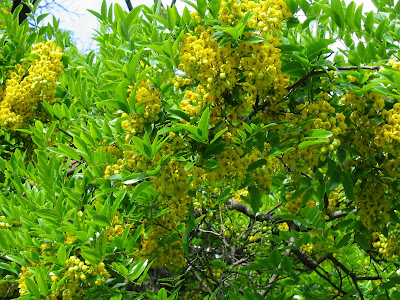Rare plant thrives in botanic garden
This beautiful tree can reach 20 m high and when in flower it’s chock full of rich yellow flowers. Native Laburnum or Brush Cassia, Cassia marksiana, grows well in the Royal Botanic Gardens in Sydney but there are less than 100 left in the wild
It’s in the pea family and produces the typical pea pod, but its flowers are quite regular so it belongs to the Caesalpinoideae subfamily rather than the Faboideae (with butterfly-like flowers similar to your garden pea) or the Mimosoideae (wattles and the like).
Native Laburnum looks a little bit like the Golden Shower Tree planted in Sydney streets, but among other things it has smaller leaves and brighter coloured flowers.
Its native habitat is the far north-east of the State, in the Tweed and Brunswick River valleys, and into Queensland where it only gets as far north as Beenleigh, an outer suburb of Brisbane.
Although there are 20 known localities, each population now has less than 10 individuals. Most of its habitat has been cleared and many of the remaining stands are threatened by weeds, grazing and further development impacts.
As most native plant buffs know, scientific research has reduced the number of cassias in Australia. I must stress the plants are still there, but a couple of our better known species (e.g. the Silver Cassia, Cassia artemisioides) are now in the genus Senna. Most obviously, Senna have flowers off the side of the branches whereas Cassia have terminal bunches of flowers just like our Native Laburnum.
In the Royal Botanic Gardens, there is excellent specimen of the Native Laburnum near the Twin Ponds and a smaller one in the Cadi Jam Ora Garden. We also hold seed from two trees in the NSW Seedbank, part of the third of the 1240 threatened species in the State stored to date.
Like the plantings in botanic gardens, this seed is an insurance policy for the species should that be needed, but also a way to study its biology and genetics to help look after the ‘in situ’ populations.
Image: The rare Native Laburnum festooned with bright yellow flowers. *This posting is from the Radio Archives (November 2008).

Comments